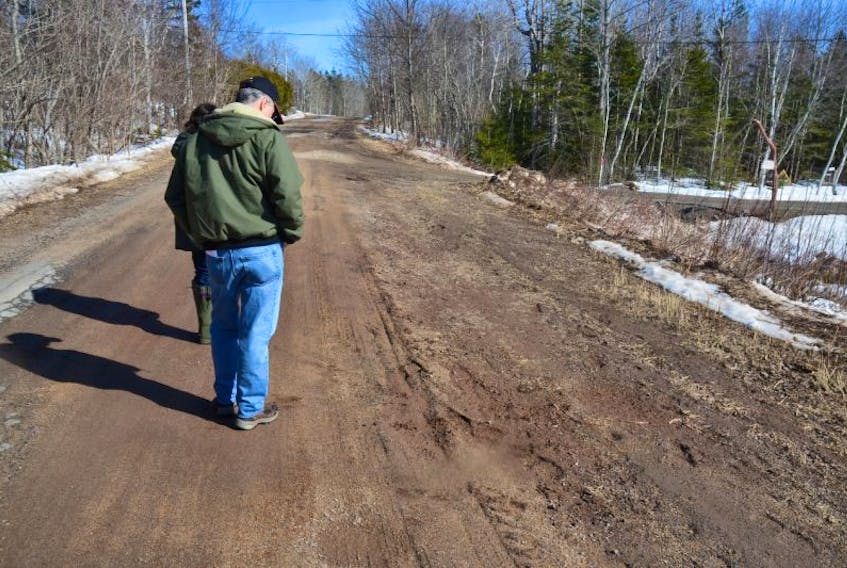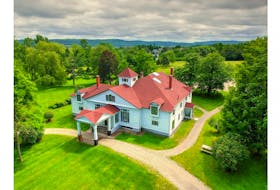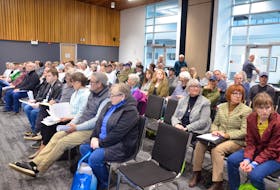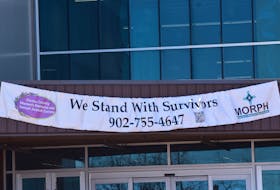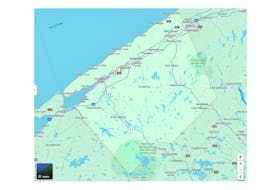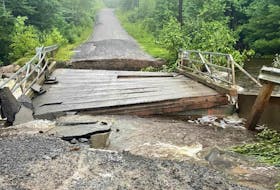Pot holes, sink holes, torn up asphalt and wash outs characterize the current condition of Foleaze Park streets, which have to be gingerly navigated to avoid damaging vehicles.
Concerned resident Roger Bennett organized a petition signed by all but one property owner in the subdivision requesting that Foleaze Park streets be added to the municipality’s J-class paving priority list.
Bennett said he received a good reception from county council when the petition was presented in October. Council voted to accept the petition for information.
“As far as we’re concerned, that petition is still active,” Bennett said.
In December, council approved a priority list for resurfacing subdivision or J-class streets across the municipality. This is part of a cost-sharing program between the province and municipalities. Once paved, the province takes over future responsibility for the streets. The three-phase priority list covers projects up until 2022.
However, the streets of Foleaze Park aren’t included on the list. Coun. Brian Hirtle attempted unsuccessfully to have the list amended to include Foleaze Park. Council approval of the priority list came on the eve of the December provincial deadline.
Bennett said he moved into the subdivision 13 years ago. The roads were in poor condition then and have steadily deteriorated. The only maintenance work has been some patching.

Concerned resident Lesley Sweet, who moved into the subdivision about a year and a half ago, said they’re trying to figure out why Foleaze Park can’t be added to the municipal priority list. The streets are “a mess.”
The residents say that, to the best of the their knowledge, Foleaze Park streets currently have what remains of the original surface applied some 45 years ago. Sweet said she’s trying to understand the justification of resurfacing other area streets that have been repaved in the past two decades while Foleaze Park receives no attention.
She said safety concerns should outweigh traffic volumes when it comes to prioritizing paving projects. She worries what would happen in the case of an emergency requiring a large turnout of firefighting equipment, for example. School buses regularly travel the streets too.
Sweet said it’s been verified that the subject streets are considered J-class and the surface condition has been scored. She said they’ve been told by a provincial Department of Transportation and Infrastructure Renewal (DTIR) representative that the streets have to make it onto the municipality’s priority list in order to be considered for cost-shared paving. DTIR area manager Richard Lloyd couldn’t be reached for comment.

Province owns Foleaze Park streets
County of Kings manager of Engineering and Public Works, Lands and Park Services Scott Quinn said in a March 6 email that Foleaze Park streets are on DTIR’s J-class list and are owned by the province.
Quinn said Foleaze Park is already in consideration for future paving priority lists past 2022. He said it hasn’t been assigned to a specific year yet since the J-class Resurfacing Cost Sharing Program (CSP) is ever-evolving process and the current agreement doesn’t go that far out.
In order for Foleaze Park to be resurfaced by 2022, Quinn said, county council and DTIR would have to approve a change to current methodology. DTIR is updating its database, which could affect the municipality’s evaluation and could prompt changes during an annual review.
He said the approach taken has to be equitable for all the other eligible roads in the municipality. There have been six other inquiries similar to Foleaze Park since December.
Quinn said that, in the meantime, there might be some discussions with DTIR to ask them to prioritize some maintenance work to restore the current surface in the spring when the weather is more suitable. This could be an interim solution pending a future upgrade via the CSP.
Did you know?
- Quinn said that the J-class Resurfacing Cost Sharing Program (CSP) dates back to the 1995 Service Exchange Agreement between the province and municipalities.
- Until that time, all public roads in the municipality came under the ownership of the province. Under the agreement, all new public subdivision roads (i.e. J-class per DTIR’s designation) that received development approval after a cut off date in 1995 came under the ownership of the municipality.
- The province agreed to retain ownership of J-class roads in existence prior to that date and maintain them. The municipality pays fees to the province that in part covers these maintenance expenses.
- After the Service Exchange Agreement was established, the CSP was set up to allow eligible J-class roads to upgrade their surface, whether from gravel to chip seal or chip seal to asphalt. Costs are shared fifty-fifty between the province and municipal unit.
- All roads that are classified as J-class on DTIR’s database are eligible for the CSP, except for roads that already had an asphalt surface. Once roads receive an asphalt surface, they are no longer eligible for the CSP and are under the complete control of the province.




